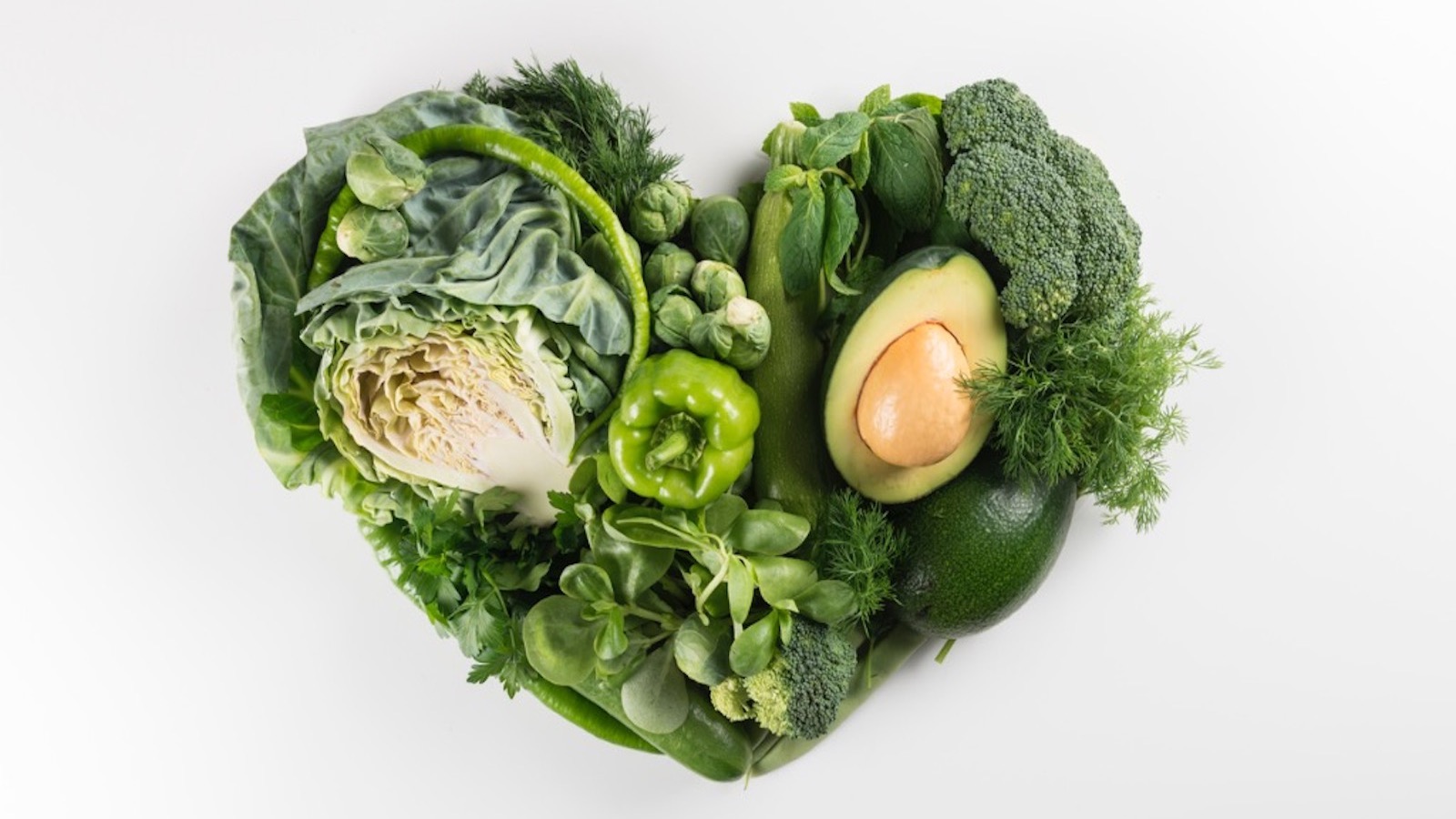
Anna Kazansky
Texas Heart Institute Positions
- Research Associate III, Molecular Cardiology Research
Publications
4862227
XCUHKMZU
1
alternatives-to-animal-experimentation
10
date
desc
Kazansky
1954
https://www.texasheart.org/wp-content/plugins/zotpress/
%7B%22status%22%3A%22success%22%2C%22updateneeded%22%3Afalse%2C%22instance%22%3Afalse%2C%22meta%22%3A%7B%22request_last%22%3A0%2C%22request_next%22%3A0%2C%22used_cache%22%3Atrue%7D%2C%22data%22%3A%5B%7B%22key%22%3A%22HH4AD2YI%22%2C%22library%22%3A%7B%22id%22%3A4862227%7D%2C%22meta%22%3A%7B%22creatorSummary%22%3A%22Bakthavatsalam%20et%20al.%22%2C%22parsedDate%22%3A%222020%22%2C%22numChildren%22%3A1%7D%2C%22bib%22%3A%22%3Cdiv%20class%3D%5C%22csl-bib-body%5C%22%20style%3D%5C%22line-height%3A%201.35%3B%20padding-left%3A%201em%3B%20text-indent%3A-1em%3B%5C%22%3E%5Cn%20%20%3Cdiv%20class%3D%5C%22csl-entry%5C%22%3EBakthavatsalam%2C%20D.%2C%20Craft%2C%20J.%20W.%2C%20%3Cstrong%3EKazansky%3C%5C%2Fstrong%3E%2C%20A.%20et%20al.%20%282020%29.%20Identification%20of%20Inhibitors%20of%20Integrin%20Cytoplasmic%20Domain%20Interactions%20With%20Syk.%20%3Ci%3EFront%20Immunol%3C%5C%2Fi%3E%20%3Ci%3E11%3C%5C%2Fi%3E%2C%20575085.%20%3Ca%20class%3D%27zp-DOIURL%27%20href%3D%27https%3A%5C%2F%5C%2Fdoi.org%5C%2F10.3389%5C%2Ffimmu.2020.575085%27%3Ehttps%3A%5C%2F%5C%2Fdoi.org%5C%2F10.3389%5C%2Ffimmu.2020.575085%3C%5C%2Fa%3E.%3C%5C%2Fdiv%3E%5Cn%3C%5C%2Fdiv%3E%22%2C%22data%22%3A%7B%22itemType%22%3A%22journalArticle%22%2C%22title%22%3A%22Identification%20of%20Inhibitors%20of%20Integrin%20Cytoplasmic%20Domain%20Interactions%20With%20Syk%22%2C%22creators%22%3A%5B%7B%22creatorType%22%3A%22author%22%2C%22firstName%22%3A%22Deenadayalan%22%2C%22lastName%22%3A%22Bakthavatsalam%22%7D%2C%7B%22creatorType%22%3A%22author%22%2C%22firstName%22%3A%22John%20W.%22%2C%22lastName%22%3A%22Craft%22%7D%2C%7B%22creatorType%22%3A%22author%22%2C%22firstName%22%3A%22Anna%22%2C%22lastName%22%3A%22Kazansky%22%7D%2C%7B%22creatorType%22%3A%22author%22%2C%22firstName%22%3A%22Nghi%22%2C%22lastName%22%3A%22Nguyen%22%7D%2C%7B%22creatorType%22%3A%22author%22%2C%22firstName%22%3A%22Goeun%22%2C%22lastName%22%3A%22Bae%22%7D%2C%7B%22creatorType%22%3A%22author%22%2C%22firstName%22%3A%22Amy%20R.%22%2C%22lastName%22%3A%22Caivano%22%7D%2C%7B%22creatorType%22%3A%22author%22%2C%22firstName%22%3A%22C.%20William%22%2C%22lastName%22%3A%22Gundlach%22%7D%2C%7B%22creatorType%22%3A%22author%22%2C%22firstName%22%3A%22Asra%22%2C%22lastName%22%3A%22Aslam%22%7D%2C%7B%22creatorType%22%3A%22author%22%2C%22firstName%22%3A%22Safa%22%2C%22lastName%22%3A%22Ali%22%7D%2C%7B%22creatorType%22%3A%22author%22%2C%22firstName%22%3A%22Shashikant%22%2C%22lastName%22%3A%22Gupta%22%7D%2C%7B%22creatorType%22%3A%22author%22%2C%22firstName%22%3A%22Sophie%20Y.%22%2C%22lastName%22%3A%22Lin%22%7D%2C%7B%22creatorType%22%3A%22author%22%2C%22firstName%22%3A%22Hema%20D.%22%2C%22lastName%22%3A%22Parthiban%22%7D%2C%7B%22creatorType%22%3A%22author%22%2C%22firstName%22%3A%22Peter%22%2C%22lastName%22%3A%22Vanderslice%22%7D%2C%7B%22creatorType%22%3A%22author%22%2C%22firstName%22%3A%22Clifford%20C.%22%2C%22lastName%22%3A%22Stephan%22%7D%2C%7B%22creatorType%22%3A%22author%22%2C%22firstName%22%3A%22Darren%20G.%22%2C%22lastName%22%3A%22Woodside%22%7D%5D%2C%22abstractNote%22%3A%22Leukocyte%20inflammatory%20responses%20require%20integrin%20cell-adhesion%20molecule%20signaling%20through%20spleen%20tyrosine%20kinase%20%28Syk%29%2C%20a%20non-receptor%20kinase%20that%20binds%20directly%20to%20integrin%20%5Cu03b2-chain%20cytoplasmic%20domains.%20Here%2C%20we%20developed%20a%20high-throughput%20screen%20to%20identify%20small%20molecule%20inhibitors%20of%20the%20Syk-integrin%20cytoplasmic%20domain%20interactions.%20Screening%20small%20molecule%20compound%20libraries%20identified%20the%20%5Cu03b2-lactam%20antibiotics%20cefsulodin%20and%20ceftazidime%2C%20which%20inhibited%20integrin%20%5Cu03b2-subunit%20cytoplasmic%20domain%20binding%20to%20the%20tandem%20SH2%20domains%20of%20Syk%20%28IC50%20range%2C%201.02-4.9%20%5Cu00b5M%29.%20Modeling%20suggested%20antagonist%20binding%20to%20Syk%20outside%20the%20pITAM%20binding%20site.%20Ceftazidime%20inhibited%20integrin%20signaling%20via%20Syk%2C%20including%20inhibition%20of%20adhesion-dependent%20upregulation%20of%20interleukin-1%5Cu03b2%20and%20monocyte%20chemoattractant%20protein-1%2C%20but%20did%20not%20inhibit%20ITAM-dependent%20phosphorylation%20of%20Syk%20mediated%20by%20Fc%5Cu03b3RI%20signaling.%20Our%20results%20demonstrate%20a%20novel%20means%20to%20target%20Syk%20independent%20of%20its%20kinase%20and%20pITAM%20binding%20sites%20such%20that%20integrin%20signaling%20via%20this%20kinase%20is%20abrogated%20but%20ITAM-dependent%20signaling%20remains%20intact.%20As%20integrin%20signaling%20through%20Syk%20is%20essential%20for%20leukocyte%20activation%2C%20this%20may%20represent%20a%20novel%20approach%20to%20target%20inflammation.%22%2C%22date%22%3A%222020%22%2C%22language%22%3A%22eng%22%2C%22DOI%22%3A%2210.3389%5C%2Ffimmu.2020.575085%22%2C%22ISSN%22%3A%221664-3224%22%2C%22url%22%3A%22%22%2C%22collections%22%3A%5B%22BBMMGS3D%22%2C%227XFQVVGN%22%2C%22VXDM6BAE%22%2C%224R4R39JD%22%2C%22XCUHKMZU%22%5D%2C%22dateModified%22%3A%222021-02-11T18%3A41%3A01Z%22%7D%7D%2C%7B%22key%22%3A%22VSGC35ZC%22%2C%22library%22%3A%7B%22id%22%3A4862227%7D%2C%22meta%22%3A%7B%22creatorSummary%22%3A%22Xie%20et%20al.%22%2C%22parsedDate%22%3A%222013-06%22%2C%22numChildren%22%3A1%7D%2C%22bib%22%3A%22%3Cdiv%20class%3D%5C%22csl-bib-body%5C%22%20style%3D%5C%22line-height%3A%201.35%3B%20padding-left%3A%201em%3B%20text-indent%3A-1em%3B%5C%22%3E%5Cn%20%20%3Cdiv%20class%3D%5C%22csl-entry%5C%22%3EXie%2C%20X.%2C%20Bartholomeusz%2C%20C.%2C%20Ahmed%2C%20A.%20A.%20et%20al.%20%282013%29.%20Bisphosphorylated%20PEA-15%20sensitizes%20ovarian%20cancer%20cells%20to%20paclitaxel%20by%20impairing%20the%20microtubule-destabilizing%20effect%20of%20SCLIP.%20%3Ci%3EMol%20Cancer%20Ther%3C%5C%2Fi%3E%20%3Ci%3E12%3C%5C%2Fi%3E%2C%201099%26%23x2013%3B1111.%20%3Ca%20class%3D%27zp-DOIURL%27%20href%3D%27https%3A%5C%2F%5C%2Fdoi.org%5C%2F10.1158%5C%2F1535-7163.MCT-12-0737%27%3Ehttps%3A%5C%2F%5C%2Fdoi.org%5C%2F10.1158%5C%2F1535-7163.MCT-12-0737%3C%5C%2Fa%3E.%3C%5C%2Fdiv%3E%5Cn%3C%5C%2Fdiv%3E%22%2C%22data%22%3A%7B%22itemType%22%3A%22journalArticle%22%2C%22title%22%3A%22Bisphosphorylated%20PEA-15%20sensitizes%20ovarian%20cancer%20cells%20to%20paclitaxel%20by%20impairing%20the%20microtubule-destabilizing%20effect%20of%20SCLIP%22%2C%22creators%22%3A%5B%7B%22creatorType%22%3A%22author%22%2C%22firstName%22%3A%22Xuemei%22%2C%22lastName%22%3A%22Xie%22%7D%2C%7B%22creatorType%22%3A%22author%22%2C%22firstName%22%3A%22Chandra%22%2C%22lastName%22%3A%22Bartholomeusz%22%7D%2C%7B%22creatorType%22%3A%22author%22%2C%22firstName%22%3A%22Ahmed%20A.%22%2C%22lastName%22%3A%22Ahmed%22%7D%2C%7B%22creatorType%22%3A%22author%22%2C%22firstName%22%3A%22Anna%22%2C%22lastName%22%3A%22Kazansky%22%7D%2C%7B%22creatorType%22%3A%22author%22%2C%22firstName%22%3A%22Lixia%22%2C%22lastName%22%3A%22Diao%22%7D%2C%7B%22creatorType%22%3A%22author%22%2C%22firstName%22%3A%22Keith%20A.%22%2C%22lastName%22%3A%22Baggerly%22%7D%2C%7B%22creatorType%22%3A%22author%22%2C%22firstName%22%3A%22Gabriel%20N.%22%2C%22lastName%22%3A%22Hortobagyi%22%7D%2C%7B%22creatorType%22%3A%22author%22%2C%22firstName%22%3A%22Naoto%20T.%22%2C%22lastName%22%3A%22Ueno%22%7D%5D%2C%22abstractNote%22%3A%22Paclitaxel%20is%20a%20standard%20chemotherapeutic%20agent%20for%20ovarian%20cancer.%20PEA-15%20%28phosphoprotein%20enriched%20in%20astrocytes-15%20kDa%29%20regulates%20cell%20proliferation%2C%20autophagy%2C%20apoptosis%2C%20and%20glucose%20metabolism%20and%20also%20mediates%20AKT-dependent%20chemoresistance%20in%20breast%20cancer.%20The%20functions%20of%20PEA-15%20are%20tightly%20regulated%20by%20its%20phosphorylation%20status%20at%20Ser104%20and%20Ser116.%20However%2C%20the%20effect%20of%20PEA-15%20phosphorylation%20status%20on%20chemosensitivity%20of%20cancer%20cells%20remains%20unknown.%20Here%2C%20we%20tested%20the%20hypothesis%20that%20PEA-15%20phosphorylated%20at%20both%20Ser104%20and%20Ser116%20%28pPEA-15%29%20sensitizes%20ovarian%20cancer%20cells%20to%20paclitaxel.%20We%20first%20found%20that%20knockdown%20of%20PEA-15%20in%20PEA-15-high%20expressing%20HEY%20and%20OVTOKO%20ovarian%20cancer%20cells%20resulted%20in%20paclitaxel%20resistance%2C%20whereas%20re-expression%20of%20PEA-15%20in%20these%20cells%20led%20to%20paclitaxel%20sensitization.%20We%20next%20found%20that%20SKOV3.ip1-DD%20cells%20%28expressing%20phosphomimetic%20PEA-15%29%20were%20more%20sensitive%20to%20paclitaxel%20than%20SKOV3.ip1-AA%20cells%20%28expressing%20nonphosphorylatable%20PEA-15%29.%20Compared%20with%20SKOV3.ip1-vector%20and%20SKOV3.ip1-AA%20cells%2C%20SKOV3.ip1-DD%20cells%20displayed%20reduced%20cell%20viability%2C%20inhibited%20anchorage-independent%20growth%2C%20and%20augmented%20apoptosis%20when%20treated%20with%20paclitaxel.%20Furthermore%2C%20HEY%20and%20OVTOKO%20cells%20displayed%20enhanced%20paclitaxel%20sensitivity%20when%20transiently%20overexpressing%20phosphomimetic%20PEA-15%20and%20reduced%20paclitaxel%20sensitivity%20when%20transiently%20overexpressing%20nonphosphorylatable%20PEA-15.%20These%20results%20indicate%20that%20pPEA-15%20sensitizes%20ovarian%20cancer%20cells%20to%20paclitaxel.%20cDNA%20microarray%20analysis%20suggested%20that%20SCLIP%20%28SCG10-like%20protein%29%2C%20a%20microtubule-destabilizing%20protein%2C%20is%20involved%20in%20pPEA-15-mediated%20chemosensitization.%20We%20found%20that%20reduced%20expression%20and%20possibly%20posttranslational%20modification%20of%20SCLIP%20following%20paclitaxel%20treatment%20impaired%20the%20microtubule-destabilizing%20effect%20of%20SCLIP%2C%20thereby%20promoting%20induction%20of%20mitotic%20arrest%20and%20apoptosis%20by%20paclitaxel.%20Our%20findings%20highlight%20the%20importance%20of%20pPEA-15%20as%20a%20promising%20target%20for%20improving%20the%20efficacy%20of%20paclitaxel-based%20therapy%20in%20ovarian%20cancer.%22%2C%22date%22%3A%22Jun%202013%22%2C%22language%22%3A%22eng%22%2C%22DOI%22%3A%2210.1158%5C%2F1535-7163.MCT-12-0737%22%2C%22ISSN%22%3A%221538-8514%22%2C%22url%22%3A%22%22%2C%22collections%22%3A%5B%22XCUHKMZU%22%5D%2C%22dateModified%22%3A%222018-05-25T15%3A48%3A44Z%22%7D%7D%2C%7B%22key%22%3A%222DALTFTZ%22%2C%22library%22%3A%7B%22id%22%3A4862227%7D%2C%22meta%22%3A%7B%22creatorSummary%22%3A%22Torikoshi%20et%20al.%22%2C%22parsedDate%22%3A%222013%22%2C%22numChildren%22%3A1%7D%2C%22bib%22%3A%22%3Cdiv%20class%3D%5C%22csl-bib-body%5C%22%20style%3D%5C%22line-height%3A%201.35%3B%20padding-left%3A%201em%3B%20text-indent%3A-1em%3B%5C%22%3E%5Cn%20%20%3Cdiv%20class%3D%5C%22csl-entry%5C%22%3ETorikoshi%2C%20Y.%2C%20Gohda%2C%20K.%2C%20Davis%2C%20M.%20L.%20et%20al.%20%282013%29.%20Novel%20functional%20assay%20for%20spindle-assembly%20checkpoint%20by%20cyclin-dependent%20kinase%20activity%20to%20predict%20taxane%20chemosensitivity%20in%20breast%20tumor%20patient.%20%3Ci%3EJ%20Cancer%3C%5C%2Fi%3E%20%3Ci%3E4%3C%5C%2Fi%3E%2C%20697%26%23x2013%3B702.%20%3Ca%20class%3D%27zp-DOIURL%27%20href%3D%27https%3A%5C%2F%5C%2Fdoi.org%5C%2F10.7150%5C%2Fjca.6248%27%3Ehttps%3A%5C%2F%5C%2Fdoi.org%5C%2F10.7150%5C%2Fjca.6248%3C%5C%2Fa%3E.%3C%5C%2Fdiv%3E%5Cn%3C%5C%2Fdiv%3E%22%2C%22data%22%3A%7B%22itemType%22%3A%22journalArticle%22%2C%22title%22%3A%22Novel%20functional%20assay%20for%20spindle-assembly%20checkpoint%20by%20cyclin-dependent%20kinase%20activity%20to%20predict%20taxane%20chemosensitivity%20in%20breast%20tumor%20patient%22%2C%22creators%22%3A%5B%7B%22creatorType%22%3A%22author%22%2C%22firstName%22%3A%22Yasuhiro%22%2C%22lastName%22%3A%22Torikoshi%22%7D%2C%7B%22creatorType%22%3A%22author%22%2C%22firstName%22%3A%22Keigo%22%2C%22lastName%22%3A%22Gohda%22%7D%2C%7B%22creatorType%22%3A%22author%22%2C%22firstName%22%3A%22Michelle%20L.%22%2C%22lastName%22%3A%22Davis%22%7D%2C%7B%22creatorType%22%3A%22author%22%2C%22firstName%22%3A%22W.%20Fraser%22%2C%22lastName%22%3A%22Symmans%22%7D%2C%7B%22creatorType%22%3A%22author%22%2C%22firstName%22%3A%22Lajos%22%2C%22lastName%22%3A%22Pusztai%22%7D%2C%7B%22creatorType%22%3A%22author%22%2C%22firstName%22%3A%22Anna%22%2C%22lastName%22%3A%22Kazansky%22%7D%2C%7B%22creatorType%22%3A%22author%22%2C%22firstName%22%3A%22Satoshi%22%2C%22lastName%22%3A%22Nakayama%22%7D%2C%7B%22creatorType%22%3A%22author%22%2C%22firstName%22%3A%22Tomokazu%22%2C%22lastName%22%3A%22Yoshida%22%7D%2C%7B%22creatorType%22%3A%22author%22%2C%22firstName%22%3A%22Tomoko%22%2C%22lastName%22%3A%22Matsushima%22%7D%2C%7B%22creatorType%22%3A%22author%22%2C%22firstName%22%3A%22Gabriel%20N.%22%2C%22lastName%22%3A%22Hortobagyi%22%7D%2C%7B%22creatorType%22%3A%22author%22%2C%22firstName%22%3A%22Hideki%22%2C%22lastName%22%3A%22Ishihara%22%7D%2C%7B%22creatorType%22%3A%22author%22%2C%22firstName%22%3A%22Seung%20Jin%22%2C%22lastName%22%3A%22Kim%22%7D%2C%7B%22creatorType%22%3A%22author%22%2C%22firstName%22%3A%22Shinzaburo%22%2C%22lastName%22%3A%22Noguchi%22%7D%2C%7B%22creatorType%22%3A%22author%22%2C%22firstName%22%3A%22Naoto%20T.%22%2C%22lastName%22%3A%22Ueno%22%7D%5D%2C%22abstractNote%22%3A%22Taxanes%20are%20among%20the%20drugs%20most%20commonly%20used%20for%20preoperative%20chemotherapy%20for%20breast%20cancer.%20Taxanes%20induce%20mitotic%20arrest%20and%20subsequent%20apoptosis.%20The%20spindle-assembly%20checkpoint%20%28SAC%29%20is%20known%20to%20be%20activated%20during%20mitosis%2C%20along%20with%20cyclin-dependent%20kinase-1%20%28CDK1%29%2C%20and%20is%20required%20for%20taxane-induced%20cell%20death.%20We%20hypothesized%20that%20CDK1%20activity%20predicts%20response%20to%20taxane-containing%20chemotherapy.%20This%20study%20included%20breast%20cancer%20patients%20who%20received%20preoperative%20chemotherapy-%20taxane-containing%20treatment%20followed%20by%20anthracycline-based%20treatment-and%20then%20underwent%20surgery.%20Before%20starting%20taxane-containing%20chemotherapy%2C%20patients%20underwent%20fine-needle%20aspiration%20biopsy%2C%20and%20the%20biopsy%20samples%20were%20incubated%20in%20paclitaxel%20solution%20to%20measure%20CDK%20activity.%20Clinical%20were%20evaluated%20after%20taxane%20therapy%2C%20and%20pathological%20resposes%20were%20evaluated%20after%20completion%20of%20all%20preoperative%20chemotherapy.%20Thirty%20five%20patients%20were%20eligible%20for%20analysis%20of%20clinical%20response%20to%20taxane-containing%20therapy.%20Twenty-six%20patients%20had%20taxane-sensitive%20and%209%20taxane-resistant%20tumors.%20Using%20a%20cut-off%20of%20CDK%20activity%20determined%20by%20the%20ROC%20analysis%2C%20patients%20were%20classified%20into%20SAC%20function%20and%20dysfunction%20groups.%20Univariate%20logistic%20regression%20analysis%20with%20clinicopathologic%20parameters%20showed%20that%20only%20CDK-based%20SAC%20functionality%20was%20significantly%20correlated%20with%20clinical%20response%20%28P%20%3D0.017%29.%20No%20significant%20correlation%20was%20observed%20between%20SAC%20functionality%20and%20pathologic%20response.%20CDK-based%20SAC%20functionality%20significantly%20predicted%20clinical%20response%20%28P%20%3D.0072%2C%20overall%20agreement%20%3D%2071.4%25%29%2C%20and%20this%20is%20a%20unique%20mechanism-based%20marker%20for%20predicting%20taxane%20chemosensitivity.%20Further%2C%20large%20prospective%20study%20is%20needed%20to%20determine%20CDK-based%20SAC%20functionality%20could%20be%20developed%20as%20a%20predictive%20biomarker.%22%2C%22date%22%3A%222013%22%2C%22language%22%3A%22eng%22%2C%22DOI%22%3A%2210.7150%5C%2Fjca.6248%22%2C%22ISSN%22%3A%221837-9664%22%2C%22url%22%3A%22%22%2C%22collections%22%3A%5B%22XCUHKMZU%22%5D%2C%22dateModified%22%3A%222018-05-25T15%3A48%3A44Z%22%7D%7D%2C%7B%22key%22%3A%22X7ZCHPNP%22%2C%22library%22%3A%7B%22id%22%3A4862227%7D%2C%22meta%22%3A%7B%22creatorSummary%22%3A%22Bartholomeusz%20et%20al.%22%2C%22parsedDate%22%3A%222012-02%22%2C%22numChildren%22%3A1%7D%2C%22bib%22%3A%22%3Cdiv%20class%3D%5C%22csl-bib-body%5C%22%20style%3D%5C%22line-height%3A%201.35%3B%20padding-left%3A%201em%3B%20text-indent%3A-1em%3B%5C%22%3E%5Cn%20%20%3Cdiv%20class%3D%5C%22csl-entry%5C%22%3EBartholomeusz%2C%20C.%2C%20Oishi%2C%20T.%2C%20Saso%2C%20H.%20et%20al.%20%282012%29.%20MEK1%5C%2F2%20inhibitor%20selumetinib%20%28AZD6244%29%20inhibits%20growth%20of%20ovarian%20clear%20cell%20carcinoma%20in%20a%20PEA-15-dependent%20manner%20in%20a%20mouse%20xenograft%20model.%20%3Ci%3EMol%20Cancer%20Ther%3C%5C%2Fi%3E%20%3Ci%3E11%3C%5C%2Fi%3E%2C%20360%26%23x2013%3B369.%20%3Ca%20class%3D%27zp-DOIURL%27%20href%3D%27https%3A%5C%2F%5C%2Fdoi.org%5C%2F10.1158%5C%2F1535-7163.MCT-11-0400%27%3Ehttps%3A%5C%2F%5C%2Fdoi.org%5C%2F10.1158%5C%2F1535-7163.MCT-11-0400%3C%5C%2Fa%3E.%3C%5C%2Fdiv%3E%5Cn%3C%5C%2Fdiv%3E%22%2C%22data%22%3A%7B%22itemType%22%3A%22journalArticle%22%2C%22title%22%3A%22MEK1%5C%2F2%20inhibitor%20selumetinib%20%28AZD6244%29%20inhibits%20growth%20of%20ovarian%20clear%20cell%20carcinoma%20in%20a%20PEA-15-dependent%20manner%20in%20a%20mouse%20xenograft%20model%22%2C%22creators%22%3A%5B%7B%22creatorType%22%3A%22author%22%2C%22firstName%22%3A%22Chandra%22%2C%22lastName%22%3A%22Bartholomeusz%22%7D%2C%7B%22creatorType%22%3A%22author%22%2C%22firstName%22%3A%22Tetsuro%22%2C%22lastName%22%3A%22Oishi%22%7D%2C%7B%22creatorType%22%3A%22author%22%2C%22firstName%22%3A%22Hitomi%22%2C%22lastName%22%3A%22Saso%22%7D%2C%7B%22creatorType%22%3A%22author%22%2C%22firstName%22%3A%22Ugur%22%2C%22lastName%22%3A%22Akar%22%7D%2C%7B%22creatorType%22%3A%22author%22%2C%22firstName%22%3A%22Ping%22%2C%22lastName%22%3A%22Liu%22%7D%2C%7B%22creatorType%22%3A%22author%22%2C%22firstName%22%3A%22Kimie%22%2C%22lastName%22%3A%22Kondo%22%7D%2C%7B%22creatorType%22%3A%22author%22%2C%22firstName%22%3A%22Anna%22%2C%22lastName%22%3A%22Kazansky%22%7D%2C%7B%22creatorType%22%3A%22author%22%2C%22firstName%22%3A%22Savitri%22%2C%22lastName%22%3A%22Krishnamurthy%22%7D%2C%7B%22creatorType%22%3A%22author%22%2C%22firstName%22%3A%22Jangsoon%22%2C%22lastName%22%3A%22Lee%22%7D%2C%7B%22creatorType%22%3A%22author%22%2C%22firstName%22%3A%22Francisco%20J.%22%2C%22lastName%22%3A%22Esteva%22%7D%2C%7B%22creatorType%22%3A%22author%22%2C%22firstName%22%3A%22Junzo%22%2C%22lastName%22%3A%22Kigawa%22%7D%2C%7B%22creatorType%22%3A%22author%22%2C%22firstName%22%3A%22Naoto%20T.%22%2C%22lastName%22%3A%22Ueno%22%7D%5D%2C%22abstractNote%22%3A%22Clear%20cell%20carcinoma%20%28CCC%29%20of%20the%20ovary%20tends%20to%20show%20resistance%20to%20standard%20chemotherapy%2C%20which%20results%20in%20poor%20survival%20for%20patients%20with%20CCC.%20Developing%20a%20novel%20therapeutic%20strategy%20is%20imperative%20to%20improve%20patient%20prognosis.%20Epidermal%20growth%20factor%20receptor%20%28EGFR%29%20is%20frequently%20expressed%20in%20epithelial%20ovarian%20cancer.%20One%20of%20the%20major%20downstream%20targets%20of%20the%20EGFR%20signaling%20cascade%20is%20extracellular%20signal-related%20kinase%20%28ERK%29.%20PEA-15%2C%20a%2015-kDa%20phosphoprotein%2C%20can%20sequester%20ERK%20in%20the%20cytoplasm.%20MEK1%5C%2F2%20plays%20a%20central%20role%20in%20integrating%20mitogenic%20signals%20into%20the%20ERK%20pathway.%20We%20tested%20the%20hypothesis%20that%20inhibition%20of%20the%20EGFR-ERK%20pathway%20suppresses%20tumorigenicity%20in%20CCC%2C%20and%20we%20investigated%20the%20role%20of%20PEA-15%20in%20ERK-targeted%20therapy%20in%20CCC.%20We%20screened%20a%20panel%20of%204%20CCC%20cell%20lines%20%28RMG-I%2C%20SMOV-2%2C%20OVTOKO%2C%20and%20KOC-7c%29%20and%20observed%20that%20the%20EGFR%20tyrosine%20kinase%20inhibitor%20erlotinib%20inhibited%20cell%20proliferation%20of%20EGFR-overexpressing%20CCC%20cell%20lines%20through%20partial%20dependence%20on%20the%20MEK%5C%2FERK%20pathway.%20Furthermore%2C%20erlotinib-sensitive%20cell%20lines%20were%20also%20sensitive%20to%20the%20MEK%20inhibitor%20selumetinib%20%28AZD6244%29%2C%20which%20is%20under%20clinical%20development.%20Knockdown%20of%20PEA-15%20expression%20resulted%20in%20reversal%20of%20selumetinib-sensitive%20cells%20to%20resistant%20cells%2C%20implying%20that%20PEA-15%20contributes%20to%20selumetinib%20sensitivity.%20Both%20selumetinib%20and%20erlotinib%20significantly%20suppressed%20tumor%20growth%20%28P%20%3C%200.0001%29%20in%20a%20CCC%20xenograft%20model.%20However%2C%20selumetinib%20was%20better%20tolerated%3B%20erlotinib-treated%20mice%20exhibited%20significant%20toxic%20effects%20%28marked%20weight%20loss%20and%20severe%20skin%20peeling%29%20at%20high%20doses.%20Our%20findings%20indicate%20that%20the%20MEK-ERK%20pathway%20is%20a%20potential%20target%20for%20EGFR-overexpressing%20CCC%20and%20indicate%20that%20selumetinib%20and%20erlotinib%20are%20worth%20exploring%20as%20therapeutic%20agents%20for%20CCC.%22%2C%22date%22%3A%22Feb%202012%22%2C%22language%22%3A%22eng%22%2C%22DOI%22%3A%2210.1158%5C%2F1535-7163.MCT-11-0400%22%2C%22ISSN%22%3A%221538-8514%22%2C%22url%22%3A%22%22%2C%22collections%22%3A%5B%22XCUHKMZU%22%5D%2C%22dateModified%22%3A%222018-05-25T15%3A48%3A44Z%22%7D%7D%2C%7B%22key%22%3A%225PCMT48Q%22%2C%22library%22%3A%7B%22id%22%3A4862227%7D%2C%22meta%22%3A%7B%22creatorSummary%22%3A%22Bartholomeusz%20et%20al.%22%2C%22parsedDate%22%3A%222010-03-15%22%2C%22numChildren%22%3A1%7D%2C%22bib%22%3A%22%3Cdiv%20class%3D%5C%22csl-bib-body%5C%22%20style%3D%5C%22line-height%3A%201.35%3B%20padding-left%3A%201em%3B%20text-indent%3A-1em%3B%5C%22%3E%5Cn%20%20%3Cdiv%20class%3D%5C%22csl-entry%5C%22%3EBartholomeusz%2C%20C.%2C%20Gonzalez-Angulo%2C%20A.%20M.%2C%20%3Cstrong%3EKazansky%3C%5C%2Fstrong%3E%2C%20A.%20et%20al.%20%282010%29.%20PEA-15%20inhibits%20tumorigenesis%20in%20an%20MDA-MB-468%20triple-negative%20breast%20cancer%20xenograft%20model%20through%20increased%20cytoplasmic%20localization%20of%20activated%20extracellular%20signal-regulated%20kinase.%20%3Ci%3EClin%20Cancer%20Res%3C%5C%2Fi%3E%20%3Ci%3E16%3C%5C%2Fi%3E%2C%201802%26%23x2013%3B1811.%20%3Ca%20class%3D%27zp-DOIURL%27%20href%3D%27https%3A%5C%2F%5C%2Fdoi.org%5C%2F10.1158%5C%2F1078-0432.CCR-09-1456%27%3Ehttps%3A%5C%2F%5C%2Fdoi.org%5C%2F10.1158%5C%2F1078-0432.CCR-09-1456%3C%5C%2Fa%3E.%3C%5C%2Fdiv%3E%5Cn%3C%5C%2Fdiv%3E%22%2C%22data%22%3A%7B%22itemType%22%3A%22journalArticle%22%2C%22title%22%3A%22PEA-15%20inhibits%20tumorigenesis%20in%20an%20MDA-MB-468%20triple-negative%20breast%20cancer%20xenograft%20model%20through%20increased%20cytoplasmic%20localization%20of%20activated%20extracellular%20signal-regulated%20kinase%22%2C%22creators%22%3A%5B%7B%22creatorType%22%3A%22author%22%2C%22firstName%22%3A%22Chandra%22%2C%22lastName%22%3A%22Bartholomeusz%22%7D%2C%7B%22creatorType%22%3A%22author%22%2C%22firstName%22%3A%22Ana%20M.%22%2C%22lastName%22%3A%22Gonzalez-Angulo%22%7D%2C%7B%22creatorType%22%3A%22author%22%2C%22firstName%22%3A%22Anna%22%2C%22lastName%22%3A%22Kazansky%22%7D%2C%7B%22creatorType%22%3A%22author%22%2C%22firstName%22%3A%22Savitri%22%2C%22lastName%22%3A%22Krishnamurthy%22%7D%2C%7B%22creatorType%22%3A%22author%22%2C%22firstName%22%3A%22Ping%22%2C%22lastName%22%3A%22Liu%22%7D%2C%7B%22creatorType%22%3A%22author%22%2C%22firstName%22%3A%22Linda%20X.%20H.%22%2C%22lastName%22%3A%22Yuan%22%7D%2C%7B%22creatorType%22%3A%22author%22%2C%22firstName%22%3A%22Fumiyuki%22%2C%22lastName%22%3A%22Yamasaki%22%7D%2C%7B%22creatorType%22%3A%22author%22%2C%22firstName%22%3A%22Shuying%22%2C%22lastName%22%3A%22Liu%22%7D%2C%7B%22creatorType%22%3A%22author%22%2C%22firstName%22%3A%22Naoki%22%2C%22lastName%22%3A%22Hayashi%22%7D%2C%7B%22creatorType%22%3A%22author%22%2C%22firstName%22%3A%22Dongwei%22%2C%22lastName%22%3A%22Zhang%22%7D%2C%7B%22creatorType%22%3A%22author%22%2C%22firstName%22%3A%22Francisco%20J.%22%2C%22lastName%22%3A%22Esteva%22%7D%2C%7B%22creatorType%22%3A%22author%22%2C%22firstName%22%3A%22Gabriel%20N.%22%2C%22lastName%22%3A%22Hortobagyi%22%7D%2C%7B%22creatorType%22%3A%22author%22%2C%22firstName%22%3A%22Naoto%20T.%22%2C%22lastName%22%3A%22Ueno%22%7D%5D%2C%22abstractNote%22%3A%22PURPOSE%3A%20To%20determine%20the%20role%20of%20PEA-15%20in%20breast%20cancer.%5CnEXPERIMENTAL%20DESIGN%3A%20A%20reverse-phase%20protein%20array%20was%20used%20to%20measure%20PEA-15%20expression%20levels%20in%20320%20human%20breast%20cancers%3B%20these%20levels%20were%20correlated%20with%20clinical%20and%20tumor%20characteristics.%20PEA-15%20was%20overexpressed%20by%20an%20adenovirus%20vector%20or%20by%20stably%20expressing%20PEA-15%20in%20different%20breast%20cancer%20cell%20lines.%20The%20effects%20on%20breast%20cancer%20cell%20survival%20and%20on%20the%20downstream%20apoptotic%20signaling%20pathway%20were%20measured%20in%20terms%20of%20cell%20proliferation%20%28trypan%20blue%20for%20cell%20viability%2C%20bromodeoxyuridine%20incorporation%20for%20DNA%20synthesis%29%2C%20anchorage-independent%20growth%20%28soft%20agar%20colony%20formation%29%2C%20and%20apoptosis%20%28fluorescence-activated%20cell%20sorter%20analysis%29.%20The%20preclinical%20efficacy%20of%20Ad.PEA-15%20given%20intratumorally%20was%20evaluated%20in%20nude%20mice%20bearing%20tumors%20from%20s.c.%20implanted%20human%20MDA-MB-468%20triple-negative%20breast%20cancer%20cells.%5CnRESULTS%3A%20In%20human%20breast%20cancers%2C%20low%20levels%20of%20PEA-15%20expression%20correlated%20with%20high%20nuclear%20grade%20%28P%20%3C%200.0001%29%20and%20with%20negative%20hormone%20receptor%20status%20%28P%20%3D%200.0004%29.%20Overexpression%20of%20PEA-15%20in%20breast%20cancer%20cells%20resulted%20in%20growth%20inhibition%2C%20reduction%20in%20DNA%20synthesis%2C%20and%20onset%20of%20caspase-8-dependent%20apoptosis.%20In%20athymic%20nude%20mice%20bearing%20MDA-MB-468%20xenografts%2C%20tumor%20volumes%20were%20significantly%20smaller%20in%20mice%20treated%20intratumorally%20with%20Ad.PEA-15%20than%20in%20control%20mice%20%28P%20%3C%200.0001%29.%20Tumors%20from%20mice%20treated%20with%20Ad.PEA-15%20had%20increased%20levels%20of%20activated%20%28phosphorylated%29%20extracellular%20signal-regulated%20kinase%20and%20reduced%20levels%20of%20Ki-67%20compared%20with%20tumors%20from%20nontreated%20or%20control-adenovirus-treated%20mice.%5CnCONCLUSION%3A%20PEA-15%20has%20therapeutic%20potential%20in%20breast%20cancer.%20Further%20preclinical%20and%20clinical%20exploration%20of%20PEA-15%20as%20a%20druggable%20target%20is%20warranted.%22%2C%22date%22%3A%22Mar%2015%2C%202010%22%2C%22language%22%3A%22eng%22%2C%22DOI%22%3A%2210.1158%5C%2F1078-0432.CCR-09-1456%22%2C%22ISSN%22%3A%221078-0432%22%2C%22url%22%3A%22%22%2C%22collections%22%3A%5B%22XCUHKMZU%22%5D%2C%22dateModified%22%3A%222018-05-25T15%3A48%3A44Z%22%7D%7D%2C%7B%22key%22%3A%22XU8VX3FF%22%2C%22library%22%3A%7B%22id%22%3A4862227%7D%2C%22meta%22%3A%7B%22creatorSummary%22%3A%22Bartholomeusz%20et%20al.%22%2C%22parsedDate%22%3A%222008-11-15%22%2C%22numChildren%22%3A1%7D%2C%22bib%22%3A%22%3Cdiv%20class%3D%5C%22csl-bib-body%5C%22%20style%3D%5C%22line-height%3A%201.35%3B%20padding-left%3A%201em%3B%20text-indent%3A-1em%3B%5C%22%3E%5Cn%20%20%3Cdiv%20class%3D%5C%22csl-entry%5C%22%3EBartholomeusz%2C%20C.%2C%20Rosen%2C%20D.%2C%20Wei%2C%20C.%20et%20al.%20%282008%29.%20PEA-15%20induces%20autophagy%20in%20human%20ovarian%20cancer%20cells%20and%20is%20associated%20with%20prolonged%20overall%20survival.%20%3Ci%3ECancer%20Res%3C%5C%2Fi%3E%20%3Ci%3E68%3C%5C%2Fi%3E%2C%209302%26%23x2013%3B9310.%20%3Ca%20class%3D%27zp-DOIURL%27%20href%3D%27https%3A%5C%2F%5C%2Fdoi.org%5C%2F10.1158%5C%2F0008-5472.CAN-08-2592%27%3Ehttps%3A%5C%2F%5C%2Fdoi.org%5C%2F10.1158%5C%2F0008-5472.CAN-08-2592%3C%5C%2Fa%3E.%3C%5C%2Fdiv%3E%5Cn%3C%5C%2Fdiv%3E%22%2C%22data%22%3A%7B%22itemType%22%3A%22journalArticle%22%2C%22title%22%3A%22PEA-15%20induces%20autophagy%20in%20human%20ovarian%20cancer%20cells%20and%20is%20associated%20with%20prolonged%20overall%20survival%22%2C%22creators%22%3A%5B%7B%22creatorType%22%3A%22author%22%2C%22firstName%22%3A%22Chandra%22%2C%22lastName%22%3A%22Bartholomeusz%22%7D%2C%7B%22creatorType%22%3A%22author%22%2C%22firstName%22%3A%22Daniel%22%2C%22lastName%22%3A%22Rosen%22%7D%2C%7B%22creatorType%22%3A%22author%22%2C%22firstName%22%3A%22Caimiao%22%2C%22lastName%22%3A%22Wei%22%7D%2C%7B%22creatorType%22%3A%22author%22%2C%22firstName%22%3A%22Anna%22%2C%22lastName%22%3A%22Kazansky%22%7D%2C%7B%22creatorType%22%3A%22author%22%2C%22firstName%22%3A%22Fumiyuki%22%2C%22lastName%22%3A%22Yamasaki%22%7D%2C%7B%22creatorType%22%3A%22author%22%2C%22firstName%22%3A%22Takeshi%22%2C%22lastName%22%3A%22Takahashi%22%7D%2C%7B%22creatorType%22%3A%22author%22%2C%22firstName%22%3A%22Hiroaki%22%2C%22lastName%22%3A%22Itamochi%22%7D%2C%7B%22creatorType%22%3A%22author%22%2C%22firstName%22%3A%22Seiji%22%2C%22lastName%22%3A%22Kondo%22%7D%2C%7B%22creatorType%22%3A%22author%22%2C%22firstName%22%3A%22Jinsong%22%2C%22lastName%22%3A%22Liu%22%7D%2C%7B%22creatorType%22%3A%22author%22%2C%22firstName%22%3A%22Naoto%20T.%22%2C%22lastName%22%3A%22Ueno%22%7D%5D%2C%22abstractNote%22%3A%22Phospho-enriched%20protein%20in%20astrocytes%20%28PEA-15%29%20is%20a%2015-kDa%20phosphoprotein%20that%20slows%20cell%20proliferation%20by%20binding%20to%20and%20sequestering%20extracellular%20signal-regulated%20kinase%20%28ERK%29%20in%20the%20cytoplasm%2C%20thereby%20inhibiting%20ERK-dependent%20transcription%20and%20proliferation.%20In%20previous%20studies%20of%20E1A%20human%20gene%20therapy%20for%20ovarian%20cancer%2C%20we%20discovered%20that%20PEA-15%20induced%20the%20antitumor%20effect%20of%20E1A%20by%20sequestering%20activated%20ERK%20in%20the%20cytoplasm%20of%20cancer%20cells.%20Here%2C%20we%20investigated%20the%20role%20of%20PEA-15%20in%20ovarian%20cancer%20tumorigenesis%2C%20the%20expression%20levels%20of%20PEA-15%20in%20human%20ovarian%20cancer%2C%20and%20whether%20PEA-15%20expression%20correlated%20with%20overall%20survival%20in%20women%20with%20ovarian%20cancer.%20We%20overexpressed%20PEA-15%20in%20low-PEA-15-expressing%20cells%20and%20knocked%20down%20PEA-15%20in%20high-PEA-15-expressing%20cells%20and%20analyzed%20the%20effects%20on%20proliferation%2C%20anchorage-independent%20growth%2C%20and%20cell%20cycle%20progression.%20We%20then%20assessed%20PEA-15%20expression%20in%20an%20annotated%20tissue%20microarray%20of%20tumor%20samples%20from%20395%20women%20with%20primary%20epithelial%20ovarian%20cancer%20and%20tested%20whether%20PEA-15%20expression%20was%20linked%20with%20overall%20survival.%20PEA-15%20expression%20inhibited%20proliferation%2C%20and%20cell%20cycle%20analysis%20did%20not%20reveal%20apoptosis%20but%20did%20reveal%20autophagy%2C%20which%20was%20confirmed%20by%20an%20increase%20in%20LC3%20cleavage.%20Inhibition%20of%20the%20ERK1%5C%2F2%20pathway%20decreased%20PEA-15-induced%20autophagy.%20These%20findings%20suggest%20that%20the%20antitumor%20activity%20of%20PEA-15%20is%20mediated%2C%20in%20part%2C%20by%20the%20induction%20of%20autophagy%20involving%20activation%20of%20the%20ERK1%5C%2F2%20pathway.%20Multivariable%20analyses%20indicated%20that%20the%20women%20with%20high-PEA-15-expressing%20tumors%20survived%20longer%20than%20those%20with%20low-PEA-15-expressing%20tumors%20%28hazard%20ratio%2C%201.973%3B%20P%20%3D%200.0167%29.%20Our%20findings%20indicate%20that%20PEA-15%20expression%20is%20an%20important%20prognostic%20marker%20in%20ovarian%20cancer.%22%2C%22date%22%3A%22Nov%2015%2C%202008%22%2C%22language%22%3A%22eng%22%2C%22DOI%22%3A%2210.1158%5C%2F0008-5472.CAN-08-2592%22%2C%22ISSN%22%3A%221538-7445%22%2C%22url%22%3A%22%22%2C%22collections%22%3A%5B%22XCUHKMZU%22%5D%2C%22dateModified%22%3A%222018-05-25T15%3A48%3A44Z%22%7D%7D%2C%7B%22key%22%3A%224EFA4566%22%2C%22library%22%3A%7B%22id%22%3A4862227%7D%2C%22meta%22%3A%7B%22creatorSummary%22%3A%22Rosen%20et%20al.%22%2C%22parsedDate%22%3A%221998%22%2C%22numChildren%22%3A1%7D%2C%22bib%22%3A%22%3Cdiv%20class%3D%5C%22csl-bib-body%5C%22%20style%3D%5C%22line-height%3A%201.35%3B%20padding-left%3A%201em%3B%20text-indent%3A-1em%3B%5C%22%3E%5Cn%20%20%3Cdiv%20class%3D%5C%22csl-entry%5C%22%3ERosen%2C%20J.%20M.%2C%20Zahnow%2C%20C.%2C%20%3Cstrong%3EKazansky%3C%5C%2Fstrong%3E%2C%20A.%20et%20al.%20%281998%29.%20Composite%20response%20elements%20mediate%20hormonal%20and%20developmental%20regulation%20of%20milk%20protein%20gene%20expression.%20%3Ci%3EBiochem%20Soc%20Symp%3C%5C%2Fi%3E%20%3Ci%3E63%3C%5C%2Fi%3E%2C%20101%26%23x2013%3B113%3C%5C%2Fdiv%3E%5Cn%3C%5C%2Fdiv%3E%22%2C%22data%22%3A%7B%22itemType%22%3A%22journalArticle%22%2C%22title%22%3A%22Composite%20response%20elements%20mediate%20hormonal%20and%20developmental%20regulation%20of%20milk%20protein%20gene%20expression%22%2C%22creators%22%3A%5B%7B%22creatorType%22%3A%22author%22%2C%22firstName%22%3A%22J.%20M.%22%2C%22lastName%22%3A%22Rosen%22%7D%2C%7B%22creatorType%22%3A%22author%22%2C%22firstName%22%3A%22C.%22%2C%22lastName%22%3A%22Zahnow%22%7D%2C%7B%22creatorType%22%3A%22author%22%2C%22firstName%22%3A%22A.%22%2C%22lastName%22%3A%22Kazansky%22%7D%2C%7B%22creatorType%22%3A%22author%22%2C%22firstName%22%3A%22B.%22%2C%22lastName%22%3A%22Raught%22%7D%5D%2C%22abstractNote%22%3A%22Our%20laboratory%20has%20been%20studying%20the%20mechanisms%20by%20which%20hormones%20regulate%20the%20expression%20of%20differentiated%20function%20in%20the%20normal%20mammary%20gland%20and%20how%20these%20regulatory%20mechanisms%20have%20deviated%20in%20breast%20cancer.%20Two%20rat%20milk%20protein%20genes%2C%20encoding%20beta-casein%20and%20whey%20acidic%20protein%2C%20have%20been%20employed%20as%20molecular%20markers%20of%20mammary%20epithelial%20cell%20differentiation.%20Composite%20response%20elements%20containing%20multiple%20binding%20sites%20for%20several%20transcription%20factors%20mediate%20the%20hormonal%20and%20developmental%20regulation%20of%20milk%20protein%20gene%20expression.%20In%20the%20whey%20protein%20gene%20promoters%2C%20these%20include%20binding%20sites%20for%20nuclear%20factor%20%28NF%29-I%2C%20as%20well%20as%20the%20glucocorticoid%20receptor%20%28GR%29%20and%20signal%20transducers%20and%20activators%20of%20transcription%20%28Stat5%29.%20In%20the%20casein%20promoters%2C%20these%20include%20binding%20sites%20for%20Stat5%2C%20Yin%20Yang%201%20%28YY1%29%2C%20GR%20and%20the%20CCAAT%5C%2Fenhancer%20binding%20protein%20%28C%5C%2FEBP%29.%20The%20C%5C%2FEBP%20family%20of%20DNA%20binding%20proteins%20may%20play%20a%20pivotal%20role%20in%20maintaining%20the%20balance%20between%20cell%20proliferation%20and%20terminal%20differentiation%20in%20mammary%20epithelial%20cells.%20During%20normal%20mammary%20gland%20development%2C%20expression%20of%20LIP%20%28liver-enriched%20inhibitory%20protein%2C%20a%20dominant-negative%20isoform%20of%20C%5C%2FEBP%20beta%29%20is%20hormonally%20regulated%20and%20correlates%20with%20cell%20proliferation%20during%20pregnancy.%20LIP%20can%20form%20heterodimers%20with%20other%20C%5C%2FEBP%20family%20members%20and%20suppress%20their%20transcriptional%20activity.%20In%20contrast%2C%20C%5C%2FEBP%20alpha%20is%20predominantly%20expressed%20during%20lactation%20following%20terminal%20differentiation.%20Elevated%20LIP%20levels%20have%20been%20detected%20in%20mouse%2C%20rat%20and%20human%20breast%20tumours%20of%20different%20aetiologies.%20This%20provides%20a%20mechanism%2C%20therefore%2C%20to%20block%20terminal%20differentiation%20and%20facilitate%20continued%20proliferation.%22%2C%22date%22%3A%221998%22%2C%22language%22%3A%22eng%22%2C%22DOI%22%3A%22%22%2C%22ISSN%22%3A%220067-8694%22%2C%22url%22%3A%22%22%2C%22collections%22%3A%5B%22XCUHKMZU%22%5D%2C%22dateModified%22%3A%222018-05-25T15%3A48%3A44Z%22%7D%7D%2C%7B%22key%22%3A%22ZP8ZVFMN%22%2C%22library%22%3A%7B%22id%22%3A4862227%7D%2C%22meta%22%3A%7B%22creatorSummary%22%3A%22Raught%20et%20al.%22%2C%22parsedDate%22%3A%221994-03%22%2C%22numChildren%22%3A1%7D%2C%22bib%22%3A%22%3Cdiv%20class%3D%5C%22csl-bib-body%5C%22%20style%3D%5C%22line-height%3A%201.35%3B%20padding-left%3A%201em%3B%20text-indent%3A-1em%3B%5C%22%3E%5Cn%20%20%3Cdiv%20class%3D%5C%22csl-entry%5C%22%3ERaught%2C%20B.%2C%20Khursheed%2C%20B.%2C%20%3Cstrong%3EKazansky%3C%5C%2Fstrong%3E%2C%20A.%20et%20al.%20%281994%29.%20YY1%20represses%20beta-casein%20gene%20expression%20by%20preventing%20the%20formation%20of%20a%20lactation-associated%20complex.%20%3Ci%3EMol%20Cell%20Biol%3C%5C%2Fi%3E%20%3Ci%3E14%3C%5C%2Fi%3E%2C%201752%26%23x2013%3B1763%3C%5C%2Fdiv%3E%5Cn%3C%5C%2Fdiv%3E%22%2C%22data%22%3A%7B%22itemType%22%3A%22journalArticle%22%2C%22title%22%3A%22YY1%20represses%20beta-casein%20gene%20expression%20by%20preventing%20the%20formation%20of%20a%20lactation-associated%20complex%22%2C%22creators%22%3A%5B%7B%22creatorType%22%3A%22author%22%2C%22firstName%22%3A%22B.%22%2C%22lastName%22%3A%22Raught%22%7D%2C%7B%22creatorType%22%3A%22author%22%2C%22firstName%22%3A%22B.%22%2C%22lastName%22%3A%22Khursheed%22%7D%2C%7B%22creatorType%22%3A%22author%22%2C%22firstName%22%3A%22A.%22%2C%22lastName%22%3A%22Kazansky%22%7D%2C%7B%22creatorType%22%3A%22author%22%2C%22firstName%22%3A%22J.%22%2C%22lastName%22%3A%22Rosen%22%7D%5D%2C%22abstractNote%22%3A%22Site-specific%20mutagenesis%20of%20the%20highly%20conserved%20milk%20box%20%28-140%20to%20-110%29%20region%20suggested%20that%20beta-casein%20expression%20is%20regulated%20by%20a%20hormone-mediated%20relief%20of%20repression%20%28M.%20Schmitt-Ney%2C%20W.%20Doppler%2C%20R.%20K.%20Ball%2C%20and%20B.%20Groner%2C%20Mol.%20Cell.%20Biol.%2011%3A3745-3755%2C%201991%29.%20However%2C%20when%20this%20sequence%20was%20placed%20upstream%20of%20a%20heterologous%20thymidine%20kinase%20promoter%2C%20it%20activated%20reporter%20gene%20expression.%20This%20apparent%20paradox%20was%20resolved%20when%20the%20trans-acting%20factor%20YY1%2C%20capable%20of%20acting%20as%20both%20a%20positive%20and%20negative%20regulator%2C%20was%20shown%20to%20interact%20with%20the%20milk%20box%20region%2C%20using%20bacterially%20expressed%20YY1%20and%20specific%20oligonucleotide%20and%20antibody%20competition%20experiments.%20Second%2C%20it%20was%20demonstrated%20that%20extracts%20prepared%20from%20several%20cell%20types%20contained%20a%20protein%28s%29%20interacting%20with%20the%20mammary%20gland-specific%20factor%20%28MGF%29%20binding%20site%2C%20previously%20shown%20to%20be%20required%20for%20beta-casein%20promoter%20activity%20%28Schmitt-Ney%20et%20al.%2C%20Mol.%20Cell.%20Biol.%2011%3A3745-3755%2C%201991%29.%20Sequence%20analysis%20of%20this%20site%20revealed%20similarity%20to%20the%20gamma%20interferon-activated%20sequence%2C%20suggesting%20that%20MGF%20may%20be%20related%20to%20the%20stat91%20signaling%20protein.%20Finally%2C%20using%20an%20oligonucleotide%20encompassing%20both%20the%20YY1%20and%20MGF%20sites%2C%20we%20detected%20a%20slow-mobility%20complex%20only%20in%20extracts%20from%20mammary%20glands%20at%20late%20pregnancy%20and%20lactation%20%28lactation-associated%20complex%20%5BLAC%5D%29.%20Site-specific%20mutation%20of%20the%20YY1%20binding%20site%20led%20to%20an%20enhancement%20in%20LAC%20DNA%20binding%20activity%2C%20while%20mutation%20of%20the%20MGF%20site%20decreased%20detectable%20LAC.%20These%20results%20support%20a%20model%20in%20which%20lactogenic%20stimuli%20lead%20to%20a%20decrease%20in%20YY1%20binding%2C%20and%20subsequent%20increased%20formation%20of%20LAC%20at%20a%20nearby%20binding%20site%2C%20to%20stimulate%20beta-casein%20transcription.%22%2C%22date%22%3A%22Mar%201994%22%2C%22language%22%3A%22eng%22%2C%22DOI%22%3A%22%22%2C%22ISSN%22%3A%220270-7306%22%2C%22url%22%3A%22%22%2C%22collections%22%3A%5B%22XCUHKMZU%22%5D%2C%22dateModified%22%3A%222018-05-25T15%3A48%3A44Z%22%7D%7D%5D%7D
Bakthavatsalam, D., Craft, J. W., Kazansky, A. et al. (2020). Identification of Inhibitors of Integrin Cytoplasmic Domain Interactions With Syk. Front Immunol 11, 575085. https://doi.org/10.3389/fimmu.2020.575085.
Xie, X., Bartholomeusz, C., Ahmed, A. A. et al. (2013). Bisphosphorylated PEA-15 sensitizes ovarian cancer cells to paclitaxel by impairing the microtubule-destabilizing effect of SCLIP. Mol Cancer Ther 12, 1099–1111. https://doi.org/10.1158/1535-7163.MCT-12-0737.
Torikoshi, Y., Gohda, K., Davis, M. L. et al. (2013). Novel functional assay for spindle-assembly checkpoint by cyclin-dependent kinase activity to predict taxane chemosensitivity in breast tumor patient. J Cancer 4, 697–702. https://doi.org/10.7150/jca.6248.
Bartholomeusz, C., Oishi, T., Saso, H. et al. (2012). MEK1/2 inhibitor selumetinib (AZD6244) inhibits growth of ovarian clear cell carcinoma in a PEA-15-dependent manner in a mouse xenograft model. Mol Cancer Ther 11, 360–369. https://doi.org/10.1158/1535-7163.MCT-11-0400.
Bartholomeusz, C., Gonzalez-Angulo, A. M., Kazansky, A. et al. (2010). PEA-15 inhibits tumorigenesis in an MDA-MB-468 triple-negative breast cancer xenograft model through increased cytoplasmic localization of activated extracellular signal-regulated kinase. Clin Cancer Res 16, 1802–1811. https://doi.org/10.1158/1078-0432.CCR-09-1456.
Bartholomeusz, C., Rosen, D., Wei, C. et al. (2008). PEA-15 induces autophagy in human ovarian cancer cells and is associated with prolonged overall survival. Cancer Res 68, 9302–9310. https://doi.org/10.1158/0008-5472.CAN-08-2592.
Rosen, J. M., Zahnow, C., Kazansky, A. et al. (1998). Composite response elements mediate hormonal and developmental regulation of milk protein gene expression. Biochem Soc Symp 63, 101–113
Raught, B., Khursheed, B., Kazansky, A. et al. (1994). YY1 represses beta-casein gene expression by preventing the formation of a lactation-associated complex. Mol Cell Biol 14, 1752–1763




